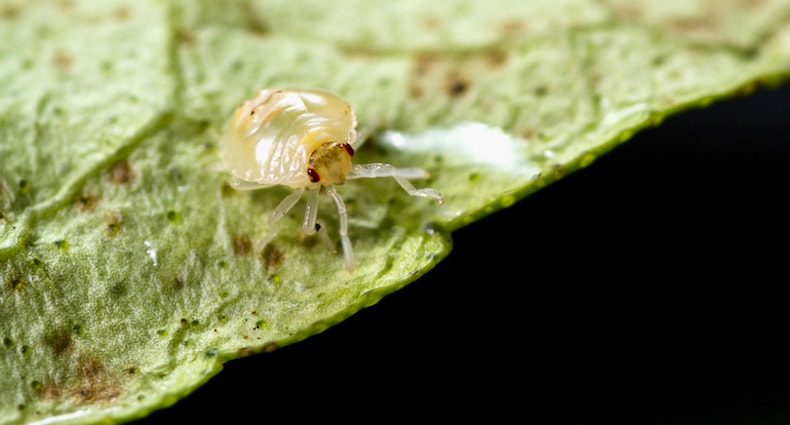Garden pests - Spider mite

Spider mites are very damaging to your garden plants
Image: Catherine Eckert/Shutterstock
Tiny but persistent and often incredibly damaging, spider mites can spread rapidly from plant to plant, thanks to their fast life cycles and use of webbing. Here’s how to deal with this garden pest.
What are spider mites?

Spider mites are related to arachnids
Image: Wollertz/Shutterstock
Spider mites are prolific sap-sucking pests, related to arachnids, that can have several overlapping generations every year, thanks to their ability to produce up to 300 eggs in the space of a few weeks.
While they are mostly active from March to October, they thrive in warm and dry conditions, so they can be a particular problem for plants in glasshouses and conservatories, often year-round.
How do I recognise spider mite damage?

You may have an infestation of spider mites if you notice fine webbing across plants
Image: Floki/Shutterstock
Spider mites are almost too small to be easily seen, but there are visible signs of infestation, especially if spider mites exist in large numbers.
- Mottling or stippling on the upper surface of leaves. It might be possible, with the help of a magnifying glass, to see the presence of eggs, skins, and the mites themselves on the underside of the leaves.
- Early leaf fall (and change in leaf colour).
- Fine silk webbing across the plant.
Large infestations can cause plants to dramatically weaken and, ultimately, die, unless dealt with swiftly.
Which plants do spider mites eat?
Spider mites are particularly fond of indoor plants. But they can infest a wide variety of garden, house, and greenhouse dwellers, including orchids, strawberries, tomatoes, cucumbers, fruit trees, and more. Few plants are completely resistant.
How do I control the spread of spider mites?

Using a hose on a plant may help remove mites<
Image: Arturs Budkevics/Shutterstock
Attempting to control the spread of spider mites takes time, especially during the warmer weather when they reproduce so quickly. Ongoing treatment will be necessary in order to target all stages of the spider mite life cycle (mites, nymphs, and eggs).
Here are a number of biological and cultural practices that can help prevent and reduce outbreaks.
- Increase the humidity – spider mite thrives in warm, dry conditions, so damp down greenhouse floors and paths to increase the humidity.
- Regularly inspect the undersides of leaves - this will help you detect the problem before it spreads. Pick off and burn any infested leaves when you find them.
- Prune infected stems, leaves, and branches – remove the infected plant matter and dispose of it immediately to prevent the spread. Avoid adding this to your compost.
- Water your plants – dehydration can make plants more susceptible to mites so keep them well-watered. You can also vigorously water stronger plants with a hose as the force of the water may dislodge the mites. Watering also acts as a preventative as dusty leaves, branches, and fruit can encourage mites.
- Introduce natural predators –Predatory mites, such as Phytoseiulus persimilis, are an extremely effective control against spider mites, reproducing at around double their rate. Conditions for predatory mites are typically hot and dry, and they require large populations of spider mites to feed on, making this a good option for larger infestations.
- Ladybugs and lacewings are also effective natural predators. Do avoid insecticides or other combative measures while encouraging natural predators.
- Use leaf shines and washes – these can help treat but also prevent further infestations, especially ones with insecticidal ingredients, such as neem. Horticultural oil can also be helpful when treating infestations on fruit trees.
- Use organic insecticidal products or low-toxicity pesticides – these can be used for significant spider mite populations, but be sure to read the instructions carefully. Insecticidal soaps, for example, are good for spot treatment, while short-lived pesticides can be used in the first instance, followed predatory mites to keep control. Keep in mind, though, that some spider mites can develop a resistance to chemical controls, so biological and cultural controls are often more effective.
- Clean your greenhouse – at the end of the growing season, make sure that you take the time to thoroughly clean out your greenhouse as spider mites like to spend the winter hidden in dry crevices and plant debris until the weather warms up again in spring.







